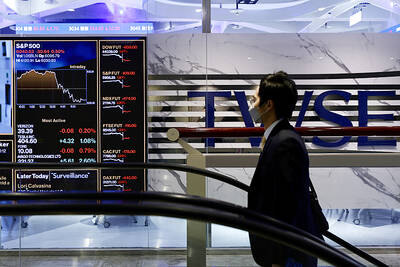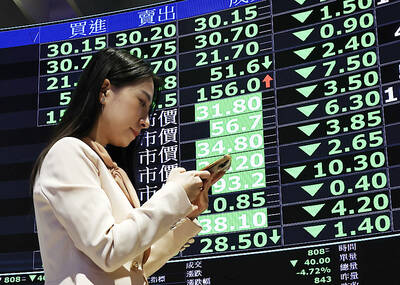Minister of Finance Yen Chin-chang (顏慶章) said yesterday that there was no planned "second wave" to the takeover of grass-roots financial institutions over the weekend.
"Rumors that certain financial institutions with positive net worth but with capital adequacy ratio lower than 8 percent will be listed as the second wave target are incorrect," the finance ministry said in a statement on Sunday.
Yen said that the ministry would, on a regular basis, request financial institutions with weak financial situations to improve.
Local media reported over the weekend that some financial institutions with a positive net worth but with a capital adequacy ratio lower than 8 percent will become the target of a second wave of raids by the ministry. The finance ministry immediately denied the report.
"The financial reconstruction fund regulations stipulate that the target for the fund is those financial institutions with negative net worth, after adjustment by financial examination. All 36 grassroots financial institutions with negative net worth had been included [in the recent raid]."
The capital adequency ratio is a benchmark used by the financial sector to evaluate the soundness of a financial institution.
Despite the financial and social instability that they have created over the years, Chen Hsi-huang (
The 314 credit departments of the farmers' and fishermen's associations have been providing the agricultural community with services considered too trivial for banks to handle, Chen said.
The accumulated deposits at all credit cooperatives exceed NT$1.2 trillion, and the small loans extended by them amount to some NT$800 billion, Chen said.

SELL-OFF: Investors expect tariff-driven volatility as the local boarse reopens today, while analysts say government support and solid fundamentals would steady sentiment Local investors are bracing for a sharp market downturn today as the nation’s financial markets resume trading following a two-day closure for national holidays before the weekend, with sentiment rattled by US President Donald Trump’s sweeping tariff announcement. Trump’s unveiling of new “reciprocal tariffs” on Wednesday triggered a sell-off in global markets, with the FTSE Taiwan Index Futures — a benchmark for Taiwanese equities traded in Singapore — tumbling 9.2 percent over the past two sessions. Meanwhile, the American depositary receipts (ADRs) of Taiwan Semiconductor Manufacturing Co (TSMC, 台積電), the most heavily weighted stock on the TAIEX, plunged 13.8 percent in

A wave of stop-loss selling and panic selling hit Taiwan's stock market at its opening today, with the weighted index plunging 2,086 points — a drop of more than 9.7 percent — marking the largest intraday point and percentage loss on record. The index bottomed out at 19,212.02, while futures were locked limit-down, with more than 1,000 stocks hitting their daily drop limit. Three heavyweight stocks — Taiwan Semiconductor Manufacturing Co (TSMC, 台積電), Hon Hai Precision Industry Co (Foxconn, 鴻海精密) and MediaTek (聯發科) — hit their limit-down prices as soon as the market opened, falling to NT$848 (US$25.54), NT$138.5 and NT$1,295 respectively. TSMC's

TARIFFS: The global ‘panic atmosphere remains strong,’ and foreign investors have continued to sell their holdings since the start of the year, the Ministry of Finance said The government yesterday authorized the activation of its NT$500 billion (US$15.15 billion) National Stabilization Fund (NSF) to prop up the local stock market after two days of sharp falls in reaction to US President Donald Trump’s new import tariffs. The Ministry of Finance said in a statement after the market close that the steering committee of the fund had been given the go-ahead to intervene in the market to bolster Taiwanese shares in a time of crisis. The fund has been authorized to use its assets “to carry out market stabilization tasks as appropriate to maintain the stability of Taiwan’s

STEEP DECLINE: Yesterday’s drop was the third-steepest in its history, the steepest being Monday’s drop in the wake of the tariff announcement on Wednesday last week Taiwanese stocks continued their heavy sell-off yesterday, as concerns over US tariffs and unwinding of leveraged bets weighed on the market. The benchmark TAIEX plunged 1,068.19 points, or 5.79 percent, to 17,391.76, notching the biggest drop among Asian peers as it hit a 15-month low. The decline came even after the government on late Tuesday authorized the NT$500 billion (US$15.2 billion) National Stabilization Fund (國安基金) to step in to buoy the market amid investors’ worries over tariffs imposed by US President Donald Trump. Yesterday’s decline was the third-steepest in its history, trailing only the declines of 2,065.87 points on Monday and